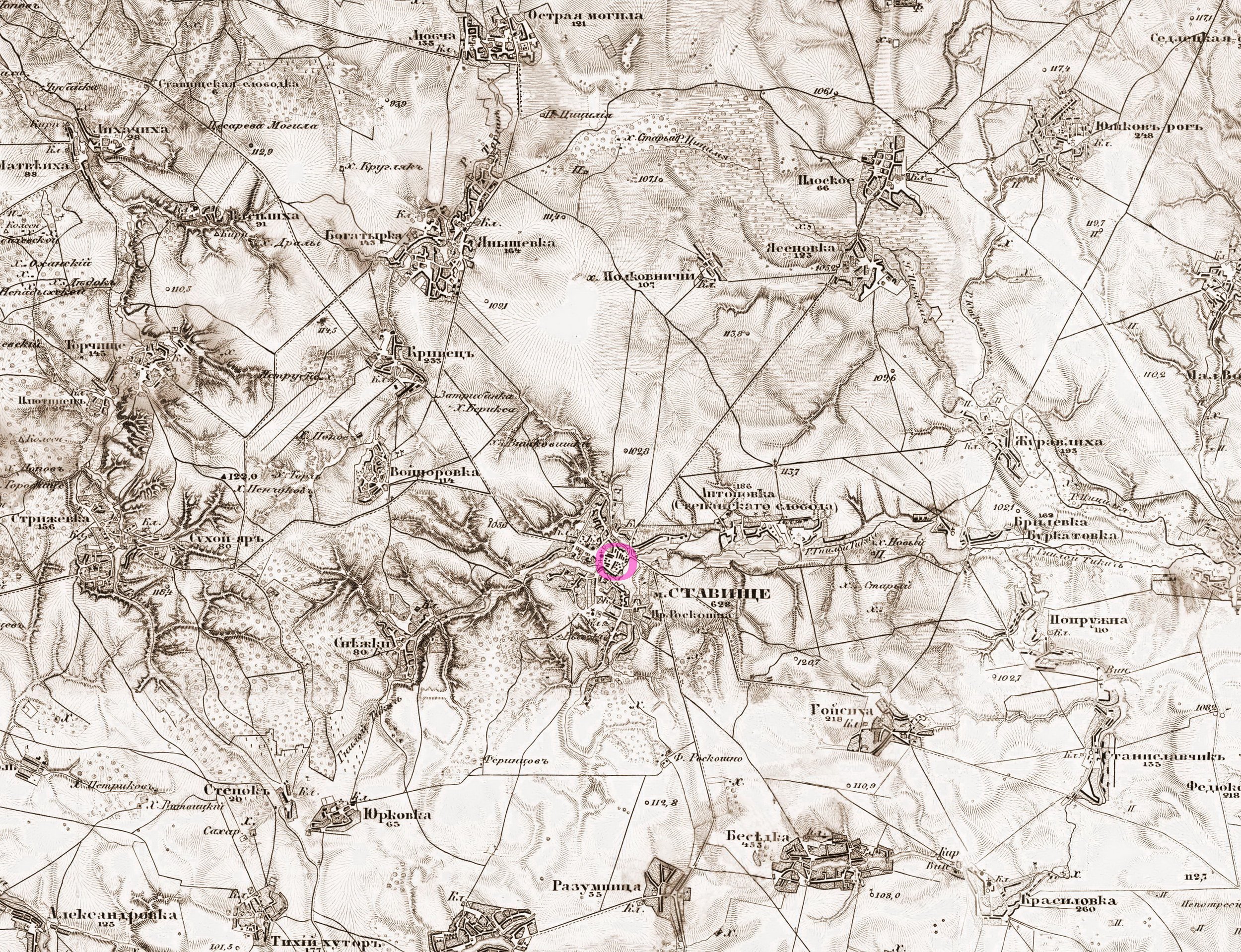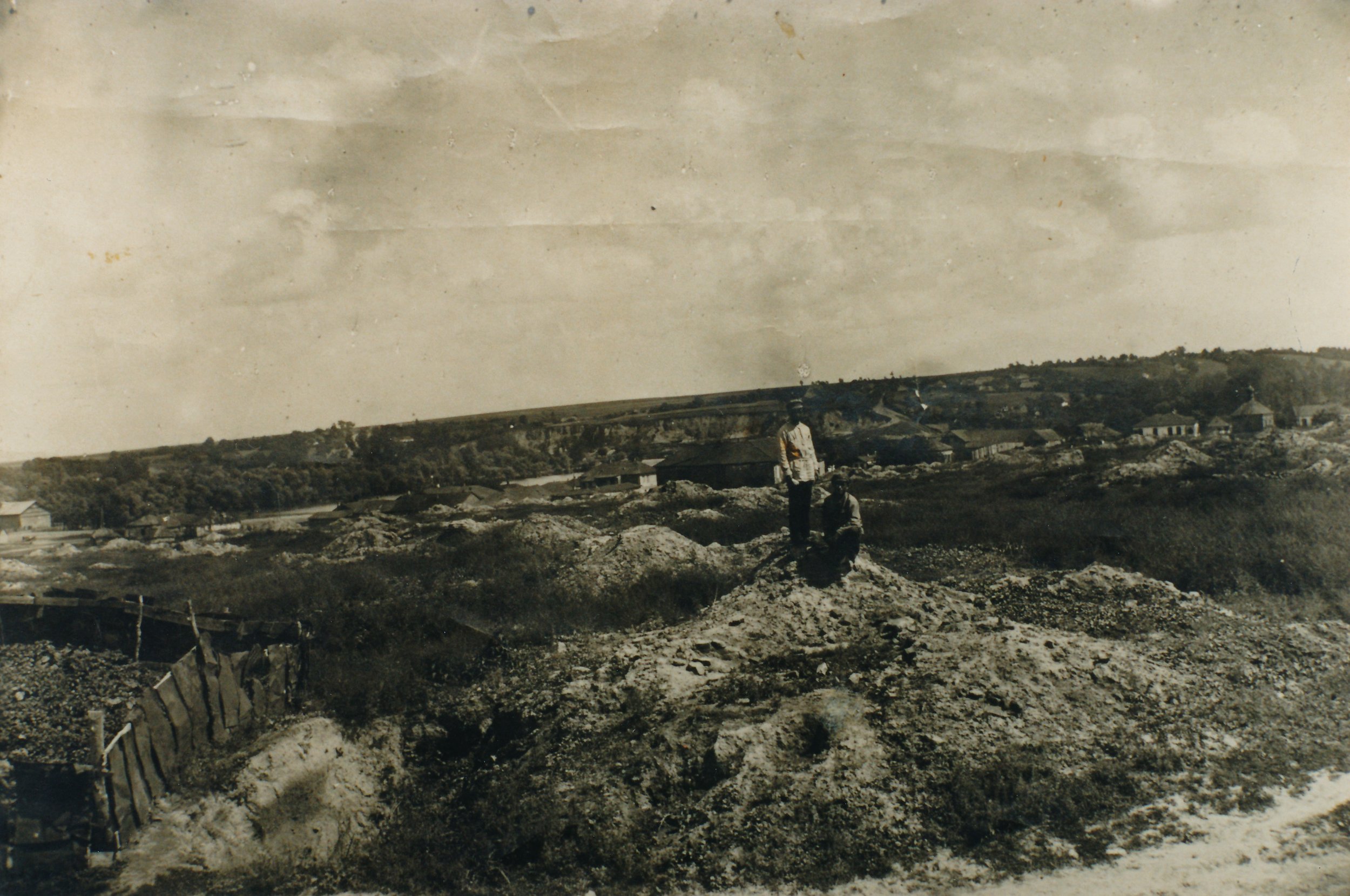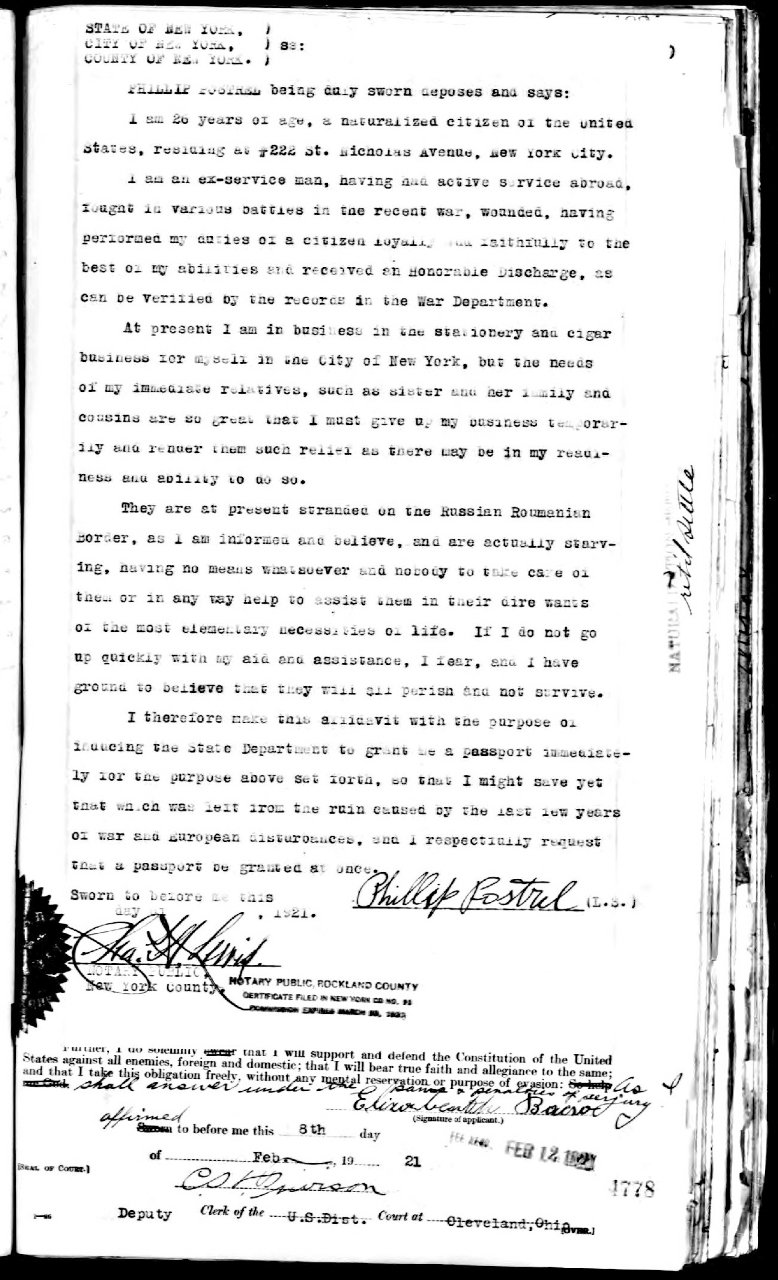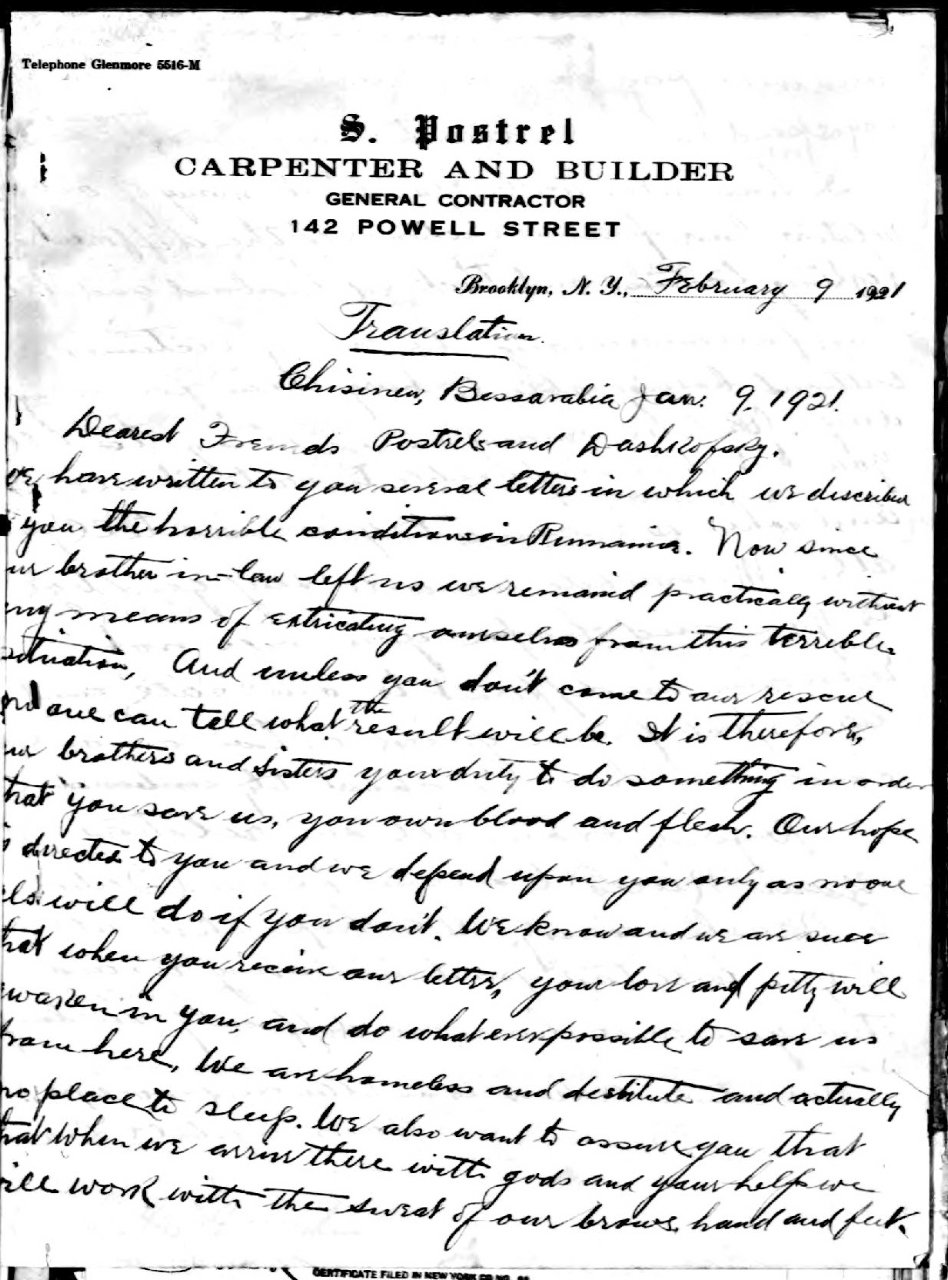Information and Artifacts from Stavische, Ukraine
This page contains various artifacts and correspondences related Stavische, Ukraine.
Archival Maps
1880 map of Stavische with the Jewish area circled in pink
1925 map of area including Stavishche
Detailed close-up of 1925 map
The Jewish Population in Stavische
The following is the page pertaining to our family name, from the Stavisht Resident Database, compiled by Karen Sanders and posted on the excellent website maintained by JewishGen and the Yizkor Book Project. There is a link provided on the main page of our website. It contains among other things, first person accounts and memories of the people living in this shtetl when it was a thriving Jewish community and also, descriptions of the terrible violence toward the Jews in the years immediately following WWI and surrounding the Russian Revolution.
In April 2013, I received an email from a man named Victor from St. Petersburg, Russia. He wrote that his wife is from Stavishche and they visit there every August. Since this weblog is searchable via google and other search engines, he found his way to our site which lists my email address. He gave me some very interesting historical information about the Jewish population of Stavishche. He also sent me the maps displayed on this page.
He told me that in 1765 there were 61 Jewish people in Stavishche, a small fraction of the total population. In 1806, Count Branicki, the Polish landowner, gave permission for Jews to settle in Bela Tserkov (White Church) and Stavishche and offered building materials and interest free loans for 15 – 20 years. He invited Jewish merchants and artisans to settle and by 1847, there were 1,411 Jews in Stavishche. By 1866, as the table below indicates, Jews were about 48% of the population of Stavishche.
During the mid and latter part of the nineteenth century, Kiev province was a desirable place to live and the overall population, including the Jews, increased significantly.
According to the first national census in 1897, Stavishche, which now included Roskoshna, had a population of 8,186, including 3,917 Jews.
What this data may mean for us is that the Postrel/Krenses families most likely were not in Stavishche before the nineteenth century. It is probable that they emigrated from another area of the Ukraine, Poland or perhaps somewhere else within the Pale of Settlement.
An appeal to help the Jews of Stavishche
I believe that the following three photos date from the early 1920s. The originals had captions on the backs which looked like they were done with an old fashioned mimeograph machine. I typed the captions, as written, under the photos. They were not in good shape so I had copy negatives and copies made and scanned them. I believe the photos were sent to my grandfather, Solomon (Shlema) Postrel, in the early 1920s, along with a letter. The letter is a mimeograph document on thin paper and is very fragile and crumbled in pieces however I managed to scan most of it. They appear to be an appeal for financial help for the Jewish families remaining in Stavische after the devastating pogroms during the period of civil unrest following the 1917 Russian Revolution.
A letter appealing for funds to help the Jews in Stavische
Stavische - These are two synagogues occupied by poor families which on their return to their native place, have found their houses ruined or seized by peasants.
Stavische - Birds-eye view of the town in ruins
Stavische - Synagogue occupied by several poor families which did not find their houses on their return to their hometown.
Bringing the Postrels to America
Pam Postrel discovered the following two documents on ancestry.com.
An affidavit prepared by Phillip Postrel, Pam’s grandfather, in support of his application for a passport to bring back Postrel family members stranded in Romania, trying to escape the violence in the Ukraine in 1921. (see Bernie Sanders’ memoir)
A translation of a letter which came to my grandfather, appealing to the Postrel and Dashkovsky (cousins on our great-grandmother, Rachel Leah’s, side) families for funds to help them emigrate to the U.S. They state they are cousins (presumedly from Stavishche) and are stranded in Romania.
Postrelkos in the “Book of Names”
In November 2014, I visited Auschwitz. In their museum was a “book of names” containing all the names of those murdered by the Nazis. The book took up the whole room. I looked up Postrel and found about 15 “Postrelkos”, all from the Kiev province of the Ukraine. I think it is very likely that most, if not all of them, were cousins.
I printed the following from a database maintained on Yad Vashem’s website
First Stavishter Benevolent Society
Before the Postrel Family Circle was founded in 1940, and the cemetery plot purchased in Old Montefiore Cemetery in Queens, most family members were buried in the plot belonging to the First Stavishter Benevolent Society, also at Old Montefiore. The society was established in 1907 and, as you can see from the photos below, family members were among it’s members and officers. Among the family buried here are Rachel Leah, the wife of Yehuda Leib Postrel and his sister, Sarah Spivack, (Chiah Sura Postrel). You can find more photos of the family gravestones in the Photos section of this site.
The following is taken from the Stavishche Shtetl Home on the web, an excellent website maintained by Vivian M. Linderman.
Many eastern Europeans after arriving in the United States, and other countries, formed community associations or landsmanschaft (Yiddish) with other “landsman” who were now beginning a new life in a new land. These associations were often extensions of those that existed in their hometowns. The groups helped new immigrants navigate the complexities of the new world while providing a foundation of old and new friends from back home. Along with hosting meetings and social activities, the associations also raised money for landsman in need and to send back to those remaining in the country of origin. Many also encouraged their members to write down their remembrances and then published memorial books to their towns and the residents killed during the Russian Revolution or Holocaust. These books, known as Yizkor books, can be found in libraries throughout the world. The Stavisht Yizkor Book has been translated, from the Hebrew and Yiddish, and can be read online at JewishGen.
In New York City, Stavishters organized a landsmanschaft named the First Stavishter Benevolent Association. As was the protocol of most landsmanschaftn, the Association purchased plots of land within local cemeteries to be used for members’ burial needs. The Stavishter society purchased plots in two Long Island, New York cemeteries, Beth Moses and Montefiore. A list of surnames found within these plots has been posted online through the Cemetery Project at the online Museum of Family History. These individuals’ names, along with additional headstone information, are included in the Stavisht Resident Database accessed from the People page of this web site. Another Stavishter section has been identified in the Cedar Park Cemetery in Paramus, New Jersey
Jewish Cemetery in Stavische
Markers on the mass graves of Jews murdered by the nazis in Stavishche, and the translations of the inscriptions.
“Here lie the remains of 50 men, old men and children of citizens of the Soviet Jews, brutally murdered by German Nazis and their policemen in September of 1941 in Stavishche. People beware! This must not happen. Do not forget and do not forgive the Nazi executioners and polizei.”
“Think people! These poor people do not live to see victory. The nazi executioners and their policemen brutally cut short a life, breath, voice, thoughts of 150 Soviet Jewish citizens, the old, the young, women and children. It’s your mother, your sisters, daughters and grandchildren. Hearken to the mental and physical suffering of the dead, and you will know the depth and grandeur of their struggle for your bright and happy life.
Do not suffer but pierce hate and charity towards fascism and swear that he never prevent a recurrence of such victims. Keep the light alive the memory of them is in your descendants. Do not forget! This they have bequeathed.”










